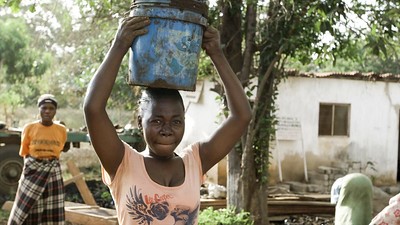The collective land claims of indigenous peoples and local communities cover more than half the global landmass, including some of the most important and biodiverse forest areas in the developing world. Recognising and securing these collective tenure rights would make a substantial contribution to reducing deforestation and forest degradation. Secure tenure systems have also been recognised for leading to transformational changes in the landscape for long-term climate change mitigation and to activities that enhance sustainable development.
There are multiple reasons for governments and institutions to prioritise collective tenure rights while moving forward with their REDD+ actions:
-
Secure collective tenure rights strongly correlate with reduced deforestation and forest degradation. There is a growing consensus and increasing scientific evidence that tenure security is an enabling factor in reducing deforestation and degradation. More effective forest stewardship by indigenous peoples and local communities is usually attributed to their active participation in forest governance, their direct benefits from forest products and their desire to maintain the resource for future generations. Their in-depth knowledge of the forest and spiritual and religious connections with nature also have positive impacts.
-
Investing in recognition of collective tenure rights is cost-effective. Recent studies have analysed the cost-effectiveness of financing secure collective tenure rights compared with other strategies that promote sustainable forest management and carbon stock maintenance. Those studies show that investments in collective tenure rights generally have lower costs and higher benefits. Local communities and indigenous peoples spend less money per hectare than conventional conservation programmes, such as protected area management, yet are likely to achieve at least equivalent conservation outcomes.
-
Indigenous peoples and local communities manage vast amounts of land and carbon. The land managed by indigenous peoples and local communities is significant in terms of carbon stocks. According to the Rights and Resources Initiative, forests in the territories of indigenous peoples and local communities assessed in 64 countries account for 69 percent of the world’s forest cover and contain 17.1 percent of the above-ground carbon stored in tropical forests. This represents more than 250 times the amount of carbon dioxide emitted by global air travel in 2015. Whether formally or informally recognised, these vast landholdings of indigenous peoples and local communities underline the significance of addressing barriers to their sustainable management under REDD+.
-
Secure collective tenure rights contribute to enhanced biodiversity and ecosystem services. The collectively managed lands of indigenous peoples and local communities contain the vast majority of the world’s genetic resources. Indigenous peoples’ territories also overlap with about 40 percent of all terrestrial protected areas. Their traditional management systems are highly compatible with biodiversity conservation. Other ecosystem services are also enhanced through management by communities and indigenous peoples, such as hydrological services, nutrient retention, regulation of local climate dynamics and pollination.
-
Secure collective tenure rights enhance access to climate finance. An increasing number of donors and funding mechanisms recognise responsible governance of tenure, including collective tenure rights, as key factors for REDD+ success. Responsible governance of tenure is closely examined in investment decision making. By taking concrete action to address collective tenure rights and setting up clear mechanisms for benefit distribution across different scales and groups of relevant stakeholders, governments can demonstrate their alignment with these priorities and pave the way for smoother access to climate finance.
-
Secure collective tenure rights improve livelihoods and food security. Up to 2.5 billion people worldwide rely on collective lands as a source of food, fuel and income, as well as on ecosystem services provided by well-managed forests. Enhancing tenure security has a positive effect on rural livelihoods. For example, a global study covering 108 countries found that strong property rights are linked to higher per capita incomes and greater socio-economic stability. Collective forest enterprises often reinvest a portion of their profits in public benefits, such as health and education, promoting longer-term prosperity. Tenure security can alleviate the disproportionate burden of poverty that women face and, in turn, benefit families as a whole since women tend to make decisions that prioritise household welfare.
Since 2013, the UN-REDD Programme has promoted the importance of secure land and forest tenure as an enabling condition for successful REDD+. A number of country partners have received support to conduct participatory assessments of their tenure, legal and policy frameworks and subsequently, steps have been taken to improve tenure regimes.
In addition, the recently-launched UN-REDD technical paper, “Collective tenure rights: Realising the potential for REDD+ and sustainable development,” further explores the key contribution of collective tenure rights towards mitigating climate change and highlights the positive impact of secure collective tenure rights in Nepal, Peru and Tanzania. The paper is accessible at the following link: http://www.fao.org/3/cb3521en/cb3521en.pdf
Useful links:
-
Publication: Collective tenure rights: Realizing the potential for REDD+ and sustainable development. Technical paper
-
Publication: Collective tenure rights: Realizing the potential for REDD+ and sustainable development. Information brief
-
Article: Making Secured Collective Tenure Rights a Reality in Nepal, Peru and Tanzania


